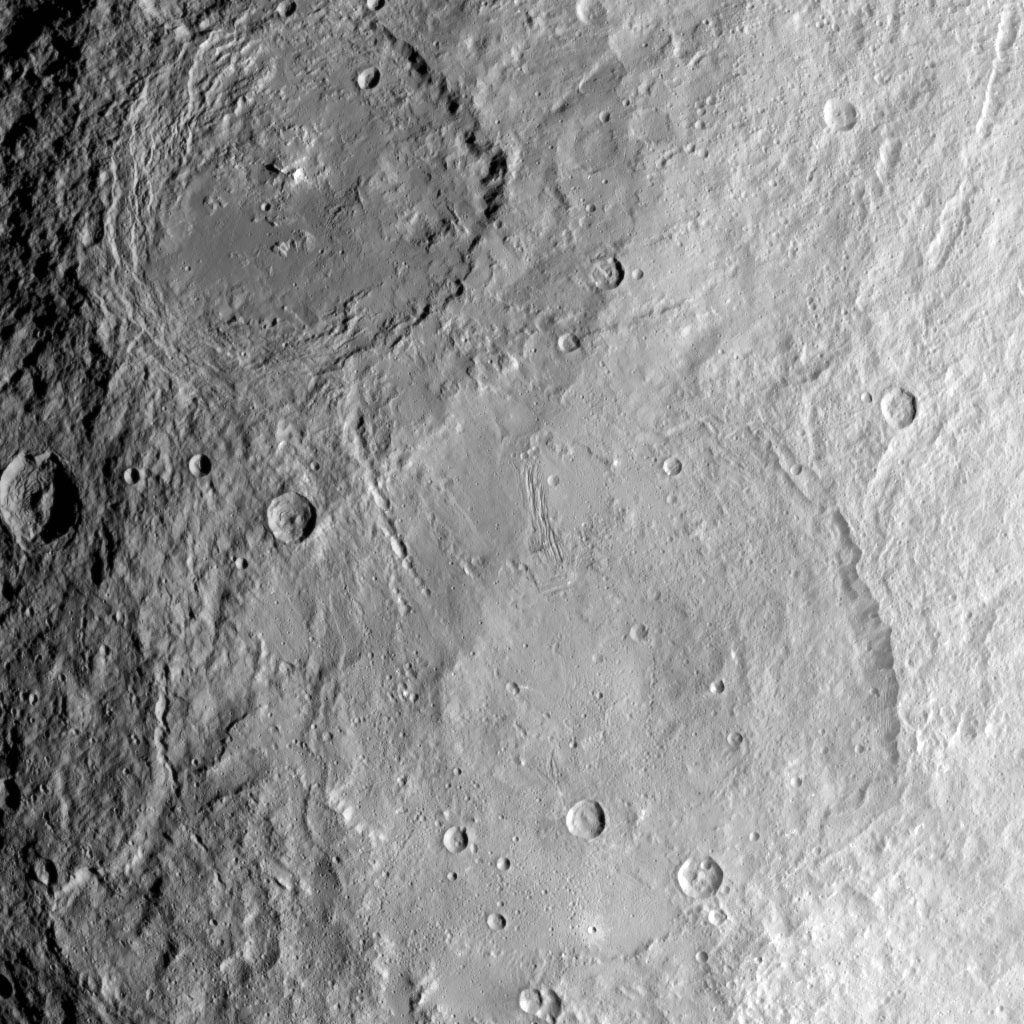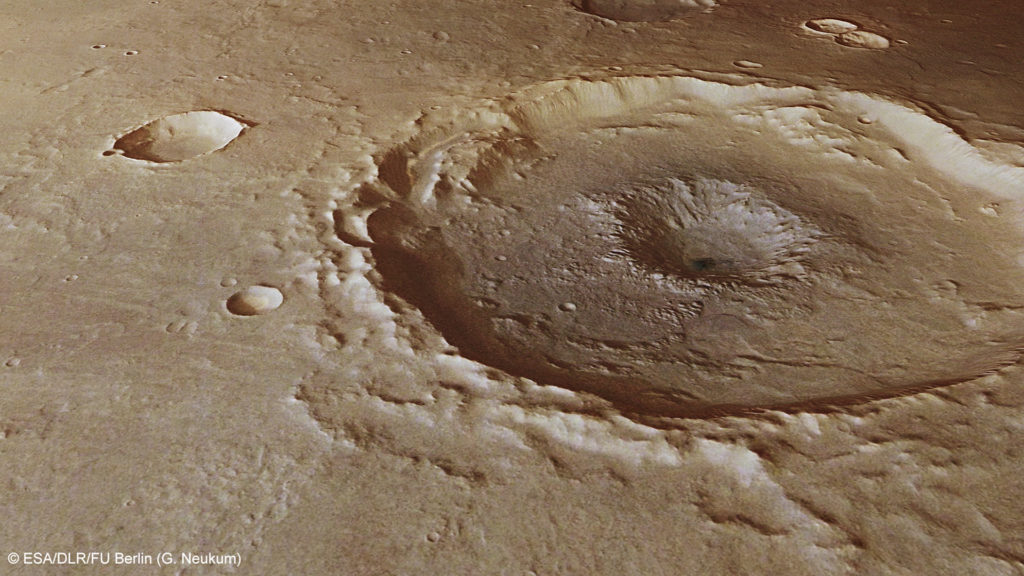Featuring image: Ceres is the largest body inside the main asteroid belt. Could this icy dwarf planet be still geological active? NASA/JPL-CalTech/UCLA/MPS/DLR/IDA, public domain (CC0).
Paper: Brine residues and organics in the Urvara basin on Ceres
A. Nathues, M. Hoffmann, N. Schmedemann, R. Sarkar, G. Thangjam, K. Mengel, J. Hernandez, H. Hiesinger, J. H. Pasckert
When you think about asteroids, you might picture an old, cold collection of rocks and dust. But the closer we look at them, the more complex these bodies turn out to be. Could some of them still be geologically active?
Ceres, a major body in the main asteroid belt, is covered by several big impact craters. A group of researchers led by Dr. Nathues from the Max Planck Institute for Solar System Research, used data from a former space mission to investigate the geology of one of the most prominent impact craters. Not only did they find the expected landscape of a post-impact region, but they also found signs of more recent geological processes and evidence for a global brine layer under the surface of Ceres.
NASA’s orbiter Dawn was launched in 2007 and visited several asteroids in the main asteroid belt between Mars and Jupiter until it journey ended on the 31st of October 2018. For the first time, we were able to investigate the surfaces of these objects in great detail. Dawn also visited Ceres, the largest object in the main asteroid belt. It contains roughly 25% of the belt’s total mass. As far as we know, Ceres is a dwarf planet which is partly differentiated. This means Ceres doesn’t simply consist of a homogeneous mass of rocks, ice and dust. During its formation, temperatures were high enough to allow a separation of mantle and crust. While the mantle is dry and presumably uniform, the structure of the crust might be more complex. Getting a better understanding of Ceres’ crust and topography was one of the major goals of the Dawn mission.

Like most of the major bodies in our solar system, Ceres is covered by many impact craters. Craters are a great opportunity to study the nature of the interior of a planet or asteroid. The force of the impact leads to an excavation of the material deep below the impact scene. One of the largest craters on Ceres is the Urvara basin with a diameter of 240 km. Another defining feature of this crater is its so called central pit, a depression in the centre of the crater. These kinds of impact features usually form only in regions where the rocks contain a lot of volatiles like water. The heat from the impact causes the volatiles to evaporate and leave a void behind, into which the rocks implode. While geological models suggested that there could be an icy remnant of an ancient ocean under the surface of Ceres, we still don’t really know how Ceres’ crust is structured. Thus, this central pit adds evidence to the existence of a global ice and brine layer in Ceres’ crust. Moreover, by further investigating the geology of the Urvara basin, the geologists found large areas in the basin, which are considerably younger than the impact (~100 Ma younger). Some of these younger areas show a high abundance of organic material. A possible explanation could be a eruption of a cryovolcano. In contrast to ordinary volcanos, cryovolcanos don’t extract magma from the deep, but a slushy mixture of ice, water and rocks.

The time difference between the impact and the excavation of the younger material rules out the heat of the impact as a possible source for the cryovolcanism. This might imply that Ceres is still a geologically active body. Furthermore, the existence of organic-rich material in and under the surface of Ceres makes it a major object of interest for the search of extraterrestrial life. Cryovolcanos in particular are a favoured habitat for life on icy worlds. However, these findings show us that some icy worlds in the main belt might be not as geologically dead as previously thought. Earth is just the start. In the future, young geologists will not only have to learn about plate tectonics on Earth, but also how geology works on other worlds, far away from Earth.
License:
‘Looking into Ceres interior’ by Max Winkler is licensed under a Creative Commons Attribution-ShareAlik

